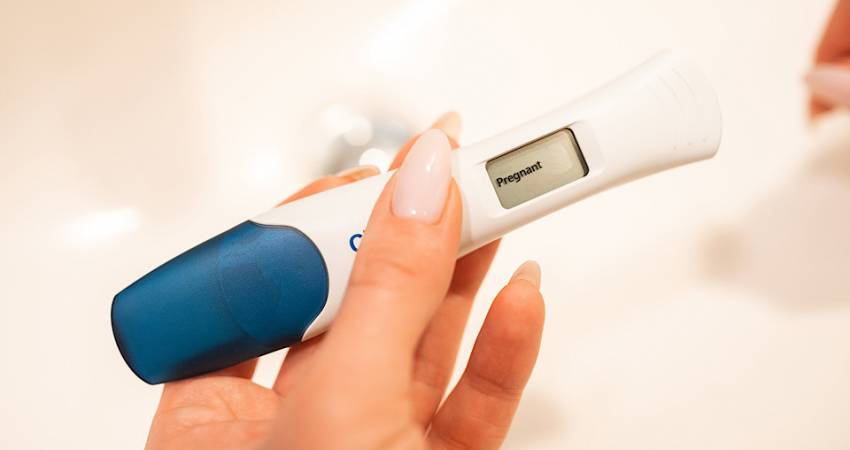
No clinically significant adverse events after abortion pill reversal — Australian study
A study has been published showing that no clinically adverse events were recorded for women who underwent abortion pill reversal treatment – where the effects of the abortion pill are reversed by giving the pregnant woman extra progesterone, allowing the opportunity to continue with her pregnancy.
The progesterone treatment, which must be given within 24 hours of a woman taking the first of two abortion pills – mifepristone – has sparked debate and opposition from abortion supporters. However, a new study from a pilot trial found that five out of six of the women who participated in the trial went on to have live pregnancies after two weeks of taking the progesterone treatment, was indicated through an ultrasound scan.
“There were no clinically significant adverse events,” authors from two Australian universities noted, adding that the small study demonstrated a “clinically sound protocol” for researching the use of progesterone-after-mifepristone, and that the research “supported the need” for further large-scale trials. The study also pointed out that progesterone was not linked to birth defects.
In October 2021, newspapers including The Irish Times, reported that Facebook Ireland was set to investigate online ads from pregnancy resource centres, advertising the abortion pill reversal treatment.
It came after The Centre for Countering Digital Hate first published a report the previous month. The Irish Times reported claims that abortion pill reversal was “unproven and unsafe,” stating:
“In its research covering both Facebook and Google, the CCDH accused them of taking money for ads that “promote an unproven and unsafe medical procedure – so-called abortion ‘reversal’.”
“Clinical studies show this procedure is dangerous, potentially causing severe haemorrhaging. In every case these ads violate the platforms’ own standards.”
The newspaper also carried comments from obstetrician and gynaecologist Dr Aoife Mullally, the HSE’s former clinical lead for abortion. As reported by The Irish Times, she said “there is no such thing as ‘abortion reversal’. The practice is not recommended by any professional body that looks after women or provides abortion care.”
It also pointed to information given by the HSE, that:
“Once you take mifepristone, the abortion will begin. It is irreversible.”
However, a year prior, a medical conference in Dublin heard that abortion pill reversal had already been safely and successfully provided in Ireland.
The 2020 conference, which was attended by health care professionals from Ireland and Northern Ireland, sought to appraise the international evidence and data relating to reversal of the abortion pill.
As reported by Gript at the time, an Irish doctor said that he had successfully treated a woman who had taken the abortion pill in Ireland by prescribing the use of progesterone. The effects of the abortion pill had been reversed and the woman was continuing with her pregnancy.
The Australian trial study, where women who changed their mind after commencing a medical abortion, saw the women taking progesterone after mifepristone — the pill which is used in combination with misoprostol to medically induce an abortion.
The study, which has now been published in the Journal of Obstetrics and Gynaecology Research, involved nine women who had contacted the progesterone after mifepristone (PAM) trial between October 2020 and June 2021. Six of the women enrolled and commenced progesterone treatment.
The aim of the pilot study, published in November, was to assess the safety and effectiveness of a clinical trial protocol for the therapeutic use of progesterone in women who commenced medical abortion – then subsequently changed their minds, and wanted to continue their pregnancies.
Trial participants were informed that the progesterone use was off-label, and that there was no guarantee the treatment would result in an ongoing pregnancy. Further, they were told that there was currently only limited published evidence of the benefit of progesterone for pregnancy survival.
The women who took part in the trial had contacted the trial coordinator after completing a web form, which detailed the inclusion criteria – including that the women had to be aged 18-45, and had to have taken mifepristone within the last 72 hours. Participants had a median age of 26.
Those participating did so on the condition that they had not taken the second abortion pill, misoprostol. A high dose of oral progesterone was chosen for the study, with the progesterone capsules being convenient to administer, and available through community pharmacies in Australia. The women took four 400mg capsules of progesterone twice a day for three days, then 400mg at night until 19 completed days of the hormone treatment.
The study found that five of the participants had ongoing, live pregnancies at the primary endpoint of the study, when an ultrasound was performed after 2 weeks of taking the treatment. Another participant suffered a miscarriage after nine days of progesterone treatment.
“While viability at 2 weeks is not a measure of live birth, it would be expected by that time for mifepristone to be eliminated sufficiently for it to have no further appreciable deleterious effect on the pregnancy. Therefore, identification of causation for miscarriage after this time should consider factors other than mifepristone,” the study notes.
One of the participants had a miscarriage after 9 days of taking the progesterone treatment. The study reports that there were no clinically significant adverse events for any of the women.
Women who participated in the trial listed a number of reasons for doing so, with one participant reporting having felt “immediate regret” and that her partner then assisted her in seeking options and provided her with details for the trial.
The study further noted:
“Progesterone use during pregnancy is considered safe on the basis of current evidence and it is included in treatment guidelines for early pregnancy threatened miscarriage.
“However, given its longstanding and widespread use in fertility treatments and pregnancy, possible risks and harms continue to be explored. Neither progesterone nor mifepristone have been associated with birth defects.”
Researchers added: “It was expected that a number of participants would experience bleeding and/or cramping, since these are commonly experienced after mifepristone ingestion or in miscarriage. There was no major haemorrhage or other clinically significant adverse events in the PAMper trial.”
The study was led by Dr Joseph V. Turner, a GP Obstetrician/Rural Generalist and a Senior Lecturer at the School of Rural Medicine at the University of New England, and involved a number of other medical researchers from the University of Queensland and the University of New England.
Concluding, the authors said that the small study demonstrated “a clinically sound protocol” for researching the use of progesterone-after-mifepristone for women in the circumstance of wanting to continue a pregnancy after taking the abortion pill.
They said that the results of the pilot study supported the need for further larger scale trials in the field, stating:
“Further trials are required to determine pregnancy viability and live birth rates for women taking progesterone after mifepristone. Other questions include: the effect of time between mifepristone and progesterone ingestion; effect of gestational age on treatment/pregnancy outcomes; and utility of different progesterone dosage forms and treatment regimens.”
Noting the limitations of the pilot trial, researchers said that the sample population was small – representing 0.03% of the 29 770 prescriptions for mifepristone/misoprostol in Australia during the same time period.
The study also had a limited timeframe and recruitment strategy.
“Women have previously found “abortion reversal” services in Australia by internet searches rather than being referred,” authors added.
“Women who have commenced medical abortion but who then wish to discontinue and maintain their pregnancy typically initially contact their abortion clinic or hospital emergency department. Clinicians in these locations may be unaware of the research in the use of progesterone in such circumstances and would be unlikely to know of the PAMper trial or how to refer women.”
‘AN INCREASING NEED FOR RESEARCH IN THIS AREA’
“As a pilot trial, the study was limited to a small number of participants which did not enable statistical assessment of whether progesterone taken after mifepristone ingestion increased the rate of pregnancy viability,” they added.
Concluding, the Australian researchers pointed to an increase in medical abortion rates in Australia. Figures were cited which showed that early medical abortion prescriptions increased from 26,000 in 2019 to 31,000 in 2021.
“An absolute increase in medical abortion rates is anticipated, with an expected commensurate small increase in the number of women who change their mind after taking mifepristone and who request treatment to try and maintain viability of their pregnancy. Thus, there is an increasing need for research into this area,” they wrote.
“For the small subset of women who commence medical abortion and then change their mind and wish to maintain their pregnancy, their clinical emergency is not addressed adequately by current practice guidelines,” authors added.
They said that the telehealth study demonstrated “a clinically and ethically sound protocol for researching the use of progesterone-after-mifepristone for women in this circumstance.”
They also wrote that larger clinical trials would be required in order to determine the clinical effectiveness of progesterone-after-mifepristone and, more importantly, how best to serve the health needs of women who decide not to continue with a medical abortion.
Maria Maynes
This article was first published in Gript and is printed here with permission
Photo Credit : Pexels (RDNE Stock Project)
Featured
- Yes, that hideous celebration of 300 abortions is real
- White Crosses Memorial: Dungarvan once again pays its respects to our aborted babies
- Precious Life welcomes strong stand by Scottish Bishops against 'draconian' Buffer Zones law
- The fury over sex-selective abortion in Britain
- IFPA’s claim ignores HSE statistics on benefit of 3-day wait
- 12 Wonders of Christmas a huge Success
- Campaign to stop EU funding out of state abortions - tell your EU commissioner to vote NO
- Judge recuses himself from case of woman praying in censorship zones for “apparent bias”
- I’m a Celebrity star criticises “sad” UK law that aborts babies with Down Syndrome up to birth
- British actress speaks out on “serious risk” assisted suicide bill has for those with eating disorders
- Caplan’s “Tragic Hysteria of Abortion” discusses the flaws with mainstream Turnaway Study interpretations
- Mother and baby doing well after surgery for mother’s cancer during pregnancy
- Josiah: Abortion Survivor
- Loving the Unborn
- Rally for Life 2025
- Don't assist Suicide 2024


























